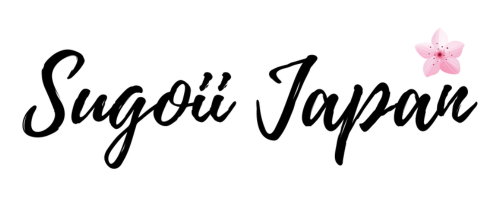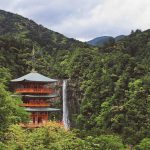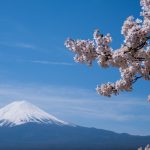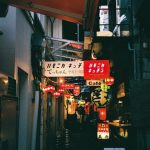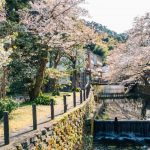For those seeking the highest quality meat and most unforgettable dining experience, you’ll have to try the different types of Wagyu beef. The quality of Wagyu has been a point of contention between food aficionados ever since. Heavily marbled and deeply flavored, Wagyu beef is renowned for its buttery softness.
Its name is derived from the words “Wa,” meaning Japanese, and “gyu,” meaning cow. Although the name translates to Japanese Cow, Wagyu does not encapsulate the entire herd of Japanese cows. Only beef that has met a specific requirement can be called Wagyu.
In this blog post, we will explain you what are the different types of Wagyu beef, the different cattle breeds in Japan, how to eat Wagyu beef and much more!
The Different Types of Wagyu Beef
Wagyu beef comes in many different varieties, each with its own unique genetic qualities. We listed below some of the most popular brands of Wagyu that you should try when you get the chance.
Kobe beef

A luxury brand of Tajima beef produced in the Hyogo prefecture of Japan. It is one of the nine most expensive foods globally and comes from a subspecies of Japanese Black cattle known as “Tajima beef.”
To be labeled as Kobe Beef, the meat must have exceptionally high levels of fat marbling, and it must be tender, flavorful, and well-marbled. Typically, this type of meat costs between 8,000 and 30,000 yen per person.
Matsusaka beef

Among all the different types of Wagyu beef, the Matsusaka beef has a special rank!
Matsusaka beef is a type of Japanese beef from Mie prefecture. It comes from Tajima cows raised in the verdant natural climate of Fukano Valley, which is comparatively remote. The beef is famous for its incredible quality and highly pampered cows with its sweet fragrance, fine marbling, and tender texture.
The cows are said to be fed beer and receive massages. Its popularity is more recognizable among Japanese gourmets compared to Kobe beef.
Ohmi beef

Bred in Shiga prefecture is located east of Kyoto. With a rich natural environment and water resources, the region is home to Ohmi beef—a high-quality beef with a history dating back over 400 years. This beef has a smoothly sweet flavor characterized by its mellow aroma, tender flesh, and delicious melting taste.
Hida beef

The high requirements for this meat to be approved include at least 14 months of permanence in the rich nature of the Gifu Prefecture. Hida beef has thin muscle fibers and a fine marble coating.
Its fats resemble a snowlike mesh marbling that permeates throughout all the cuts of the beef, giving it a distinctive juiciness. Every part of the animal’s body is incredibly tender and juicy.
Read More: Travel Tips About Gifu Prefecture
Miyazaki beef

This bright-colored tender meat is raised in the Miyazaki prefecture. To ensure its excellent taste, the use of the name “Miyazaki Wagyu” is only permitted for beef that has ranked highly in inspection.
Hitachi beef
The cattle from this beef must be raised for at least 30 months and is produced in the Ibaraki Prefecture. Its tender and adequate marbling appeal to the Japanese taste.
Iwate Shorthorn
Raised in the Iwate Prefecture with a unique method called “Natso Yama Fuyu Sato” (mountains in summer and home in winter). The beef is low in fat and contains a great deal of lean meat.
Kumamoto Aka ushi
The Japanese brown cattle for this beef are raised in the relaxed, natural environment of the Kumamoto Prefecture. Their diet is abundant in good pasture grass and has a shortened fattening period, providing healthy meat without excessive fat.
Yamagata Gyu
Raised in the Yamagata prefecture, well-known for its rice production. Its meat has fine-marbling, a tender texture, and a creamy flavor.
Kazusa beef
This Wagyu is raised in the Chiba prefecture, with its high-quality feed and iodine-rich water. You could never go weary of this beef’s light refreshing taste even when you’re full.
Want to try Japanese when in Japan? Check out our list of the 16 best Wagyu restaurants in Tokyo!
The 4 Wagyu Cattle Breeds
There are four main Wagyu cattle breeds, each with its own distinctive characteristics: the Japanese Black (Kuroge), the Japanese Brown or Red (Akage), the Japanese Polled or Shorthorn (Nihon Tankaku), and the Japanese Shorthorn (Nihon Shiroku).
Japanese Black (Kuroge)

Kuroge is the most popular kind of Wagyu, and it makes up 95% of all the Wagyu beef in Japan. It’s raised primarily in Kinki and Chugoku regions. The meat has fine strips of fat even in its lean meat (known as marbling).
The flavor of the fat is exquisite, with a creamy, tender texture that dissolves in one’s mouth. It was certified as indigenous Japanese beef cattle in 1944.
Japanese Brown (Akage)

The Japanese Brown, also known as “Akaushi” or red cattle, is a breed of cow native to Japan. It is primarily raised in Kumamoto and Kochi prefecture and has a low fat content of 12% or less. With more lean meat and less heavy in fat, it attracts a great deal of attention for its healthiness and mild taste. It’s tasty yet still has a pleasantly firm texture.
Japanese Shorthorn

Japanese Shorthorn cattle comprise about 1% of Japan’s beef cattle herd. This breed is present all over the world and adaptable to most climates. It is suitable for grazing and easy to breed.
They have dark-reddish brown hair with coarse meat quality and a rough fat content. Its meat is lean with a mild flavor that contains high levels of glutamic acid and inosinic acid, substances that contribute to its savory taste.
Japanese Polled

Japanese polled cattle are a crossbreed of Aberdeen Angus imported from Scotland with Japanese Black (native Wagyu) in 1920. These beef cattle have relatively small bodies, short legs, a rounded body, and no horns.
Certified as Japanese Beef cattle in 1944, the characteristics of this beef include its high lean meat content and distinctive Wagyu taste.
Read More: 10 Dishes You Need To Try In Japan
Wagyu Beef Grades Explained

The Japanese government tightly regulates wagyu production to protect the value and quality of the meat. The quality of Wagyu is graded on two main factors: The meat yielded (A, B, and C) and the quality of the marbled fat (1-5). Only A3-A5 Wagyu meat is certified for selling, with A5 being the most premium level of Wagyu meat you can get. Take note that the number is more important than the letter.

To get a quality grade of 5, the Beef Marbling Standard (BMS) must be 8 – 12. The BMS relates to the amount and quality of the marbling. Wagyu beef rated A5 12 is considered the best of the best.
Because top-tier Wagyu is hard to come by, rating Wagyu is an intensely studied skill in Japan. Becoming a rater in Japan takes three years of training. It must be practiced with high skill and high regulation to uphold the high standard rating of the Wagyu beef.
How To Eat Wagyu Beef
Whether you’re dining on the most expensive Japanese Wagyu or a more affordable cut, there are some definite ways to savor it. Let’s run down the best way to enjoy your Wagyu beef, featuring some Japanese cuisines.
Wagyu Steak

Let’s start with a simple Wagyu steak that you can enjoy in a Teppanyaki restaurant or a steakhouse. In Teppanyaki restaurants, the beef is grilled directly in front of diners in an open cooktop. Some western-style steakhouses serve the premium Japanese breed as well.
Read More: Top 10 Teppanyaki Restaurants in Tokyo
Yakiniku

Want to try your hand at grilling Wagyu? Yakiniku barbecue houses let you grill the beef yourself over a traditional charcoal brazier allowing for an immersive eating experience.
Make sure you check out our favorite Yakiniku restaurants in Tokyo here.
Sukiyaki

Sukiyaki is a dish of meat and vegetables prepared in a pot. It’s cooked at the table in a shallow iron pot over charcoal or another portable heat source. For this dish, the marbled beef is simmered in soy sauce and may be dipped in a raw beaten egg pronouncing the smoothness and sweetness of the meat.
Vegetables such as tofu, shiitake, mushrooms, onions, and shirataki (noodle-like food) compliment the beef in the one-pot meal mixture comprised of soy sauce, mirin (Japanese wine), and sugar as its base.
Shabu shabu
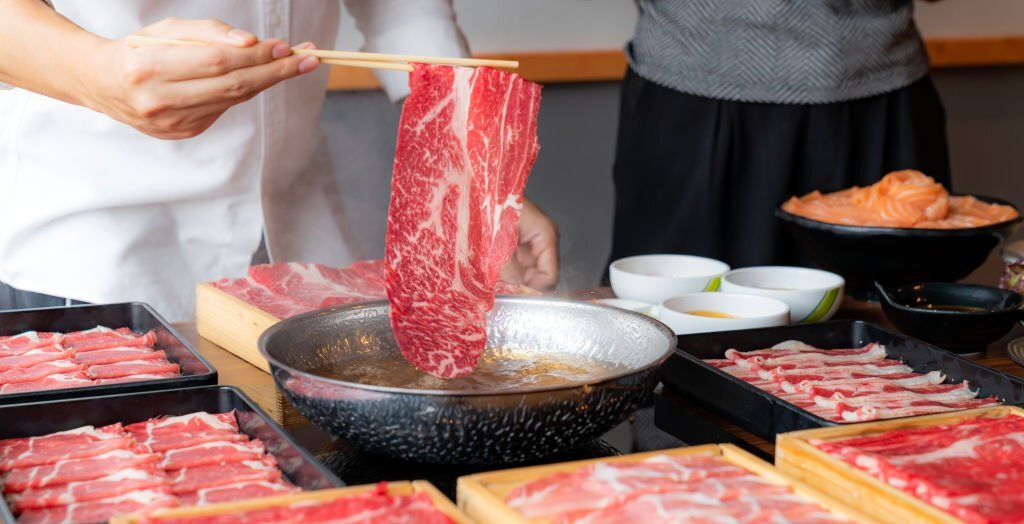
Shabu shabu, another variation of Sukiyaki, is a Japanese Hot pot composed of vegetables and thinly sliced meat. Getting its name from the Japanese onomatopoeia “swish swish,” the finely cut marbled meat is swished around the boiling broth before melting in your mouth. Shabu shabu ingredients are served raw and cooked tableside during the meal.
Wagyu Sushi

Wagyu Sushi offers a one-bite flavourful experience–sliced Wagyu beef is draped over seasoned sushi rice and torched with a light char. The premium Wagyu beef and sushi combine for a balanced ratio of rice and meat.
The Japanese have long known how to prepare their Wagyu beef perfectly. With so many recipes, you should be spoilt for choosing what Wagyu dish to try out next. So don’t shy out and get ready to enjoy a succulent slice of Wagyu cooked in a variation of methods. We’ve just been scratching the surface with these examples.
Why is Japanese beef so popular?

But why do meat connoisseurs seek after this highly-esteemed Japanese delicacy? And at such an expensive price?
Known for its marbly texture and buttery meaty melt in your mouth feel– It is, without a doubt, one of the most expensive meats in the world. Cattle breeding for Japanese Wagyu beef focuses more on quality than quantity, resulting in a premium beef with an unrivaled taste. Beef cannot be called Wagyu without passing through the quality grading system promoted by the Japanese government.
Furthermore, their diet is purposefully concentrated to achieve the marbly texture and ideal fat ratio. Not only is it mouth-wateringly delicious, but it is also very good for you. Mono-unsaturated to saturated fat ratio is higher in Wagyu than in other beef, and the saturated fat contained in Wagyu is different. Thus, it is transcendently tender, fatty and umami-rich.
—
I hope you enjoy this blog post about the different types of Wagyu beef! Each bite is truly unique and something to savor–the perfect centerpiece for any meal. As the most prized beef in Japan, the government spares no leeway on the qualification of this top-notch beef.
Although it may be unfathomable for someone who hasn’t tried this delicacy themselves, these cattle were bred with high quality at their forefront.
From their concentrated diet and feed to their environmentally-rich upbringing in various prefectures in Japan, you can’t help but be curious to taste the product of such well-bred cattle. Indeed, there are different types of Wagyu to enjoy and explore, along with an expanding repertoire of recipes to go with it.
Wagyu beef is the epitome of cattle bred for premium meat consumption. Wouldn’t you be curious to try highly-bred meat purposefully raised for a dining experience unlike any other?
